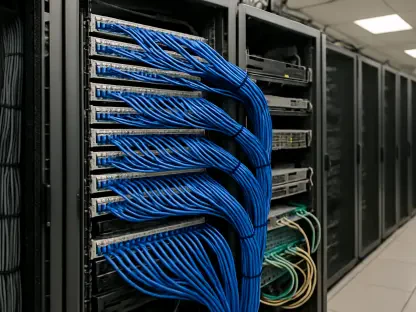Intelligent digital twins are redefining how telecom networks are managed, promising a revolutionary shift towards more predictive, efficient, and advanced operating paradigms. At the forefront of this innovation is the ability to create real-time, virtual models of network systems that meticulously reflect their physical counterparts. This breakthrough technology enables telecom operators to foresee potential issues, optimize network performance, and rigorously test configurations before deployment, thus minimizing risks.
Predictive Maintenance and Performance Optimization
Anticipating Problems with Digital Twins
The core strength of digital twins lies in their predictive capabilities. By continually updating with data from the physical network, these virtual models allow operators to anticipate and resolve issues before they escalate. This proactive approach not only improves network reliability but also significantly reduces downtime and maintenance costs by addressing problems at their nascent stages. The dynamic nature of digital twins means they always reflect the current state of the network, ensuring that operators have the most accurate information at their disposal. This real-time reflection allows for immediate action when anomalies or potential issues are detected, which is especially critical in large and complex network systems.
With the telecom industry increasingly moving towards high-capacity networks to cater to the growing demand for data, the importance of predictive maintenance has never been higher. Digital twins enable operators to simulate and analyze numerous scenarios without disrupting the actual network. This capability is particularly useful for identifying weak points that might lead to failures under high load conditions or in response to unforeseen events. Consequently, these virtual models allow operators to proactively reinforce or adjust their networks to handle increased traffic or other stressors effectively. Ensuring network robustness through predictive maintenance enhances the overall user experience by delivering more consistent and reliable connectivity.
Enhancing Network Performance
Digital twins are invaluable for enhancing operational performance in telecom networks. By simulating various scenarios and configurations, operators can identify the most efficient network setups. This optimization process ensures that resources are utilized to their full potential, resulting in faster, more reliable connections for end-users. In essence, digital twins provide a sandbox environment where telecom operators can experiment and test different configurations to determine optimal network performance. This ongoing optimization is not limited to just maintaining current service levels but also extends to future-proofing the network for upcoming demands and technological advancements.
One of the significant advantages of digital twins in performance optimization is their ability to integrate and analyze data from multiple sources. By compiling data from diverse aspects of the network, such as user behavior, traffic patterns, and hardware performance, digital twins create a comprehensive view of the entire system. This holistic perspective allows operators to make more informed decisions about network management, from resource allocation to capacity planning. Additionally, by continuously refining their models based on real-world data, digital twins help ensure that telecom networks remain agile, responsive, and capable of adapting to evolving requirements, thus maintaining high service quality for users.
Innovations Beyond Network Management
Broadening Utility of Digital Twins
The application of digital twins extends beyond traditional network management. Innovations such as energy efficiency improvements and the facilitation of teleoperated driving are now within reach due to the advanced predictive abilities of these virtual models. These broader utilities demonstrate the versatility and far-reaching impact of digital twins in modern telecom infrastructure. For instance, in pursuing energy efficiency, digital twins can model and predict the energy consumption of various network components under different operating conditions. This capability enables operators to identify areas where energy savings can be made, optimize energy use in real time, and reduce the overall carbon footprint of their networks.
Teleoperated driving, an emerging technology requiring highly reliable and low-latency communication networks, also benefits significantly from digital twins. By creating detailed simulations of the network environment in which teleoperated vehicles will operate, digital twins can help ensure that these vehicles maintain constant and robust connectivity. This is critical for the safe and efficient operation of remote-controlled vehicles, particularly in scenarios where human lives may be at risk. Moreover, the insights gained from these simulations can inform improvements in network design and infrastructure to better support teleoperated driving and other data-intensive applications, paving the way for innovations in various sectors.
6G Preparation and Hybrid Testbeds
Looking ahead, digital twins are critical in the preparation for next-generation technologies like 6G. VIAVI is developing hybrid testbeds that blend digital twins with physical network testing to ensure seamless transitions and robust network performance. This forward-looking approach underscores the importance of combining real-world data with virtual simulations to drive research and innovation in telecom networks. The hybrid testbeds created by VIAVI serve as an essential platform where new technologies and configurations can be tested in a controlled environment before being deployed in the actual network. This approach not only mitigates risks associated with deploying untested changes but also accelerates the innovation process by providing a reliable means to validate new concepts and solutions.
The preparation for 6G technology represents a monumental leap for the telecom industry, promising unprecedented levels of connectivity, speed, and data handling capabilities. Digital twins will play an integral role in this transition by enabling continuous testing and optimization of the network infrastructure. Through extensive simulations, digital twins can help identify potential challenges and areas for improvement, ensuring that telecom networks are ready to deliver on the promises of 6G. Additionally, the insights gained from hybrid testbeds can spur further research and development, driving the evolution of cutting-edge technologies and setting new standards for network performance and reliability in the upcoming years.
The Evolving Role of AI and Automation
AI in Network Operations Center (NOC)
The integration of AI and automation plays a crucial role in transforming telecom networks. Within the Network Operations Center (NOC), AI tools are central to monitoring and managing network activities efficiently. The transition towards a ‘dark NOC,’ where operations are entirely automated, is a testament to the growing reliance on AI for routine network management tasks. The concept of a ‘dark NOC’ represents the ultimate goal of creating a fully autonomous network operations center, where AI-driven systems handle monitoring, analysis, and corrective actions without human intervention. This automation not only enhances efficiency but also frees up human operators to focus on more strategic and complex issues that require human expertise.
Achieving a ‘dark NOC’ necessitates a deep understanding of network intent and operational objectives, which can vary significantly among different telecom operators. AI algorithms must be tailored to align with these goals, ensuring that automated responses are appropriate and effective. This requires collaboration between AI developers and network operators to fine-tune the AI systems for specific use cases and environments. The potential benefits of such an autonomous NOC are substantial, including improved network reliability, reduced operational costs, and faster response times to issues. As AI continues to evolve and improve, the journey towards a ‘dark NOC’ becomes increasingly feasible, promising transformative changes in how telecom networks are managed.
Lab-as-a-Service for Seamless Integration
Digital twins complement the lab-as-a-service offerings where network designs and operational models are rigorously tested before deployment. This strategic alignment ensures that any anomalies detected in live networks can be resolved based on proven lab results. By bridging the gap between design and execution, these services enable a seamless transition and higher confidence in network changes. Through a lab-as-a-service model, telecom operators can leverage advanced testing facilities to validate their digital twin simulations against physical networks. This robust testing environment ensures that network modifications are reliable, effective, and risk-free before they are implemented in real-life settings.
The lab-as-a-service approach also facilitates continuous improvement as network designs can be iteratively tested and refined based on feedback from the lab. This feedback loop is essential for maintaining high standards of network performance and reliability. Additionally, lab-as-a-service offerings provide operators with access to the latest testing tools and methodologies, enabling them to stay ahead of technological advancements and industry best practices. This proactive stance ensures that telecom networks remain resilient and adaptable, capable of meeting the dynamic needs of users and handling the complexities of modern connectivity.
Strategic Capabilities with AI and Digital Twins
AI-RAN Integration
AI’s integration into the Radio Access Network (RAN) is part of a significant technological push. VIAVI’s tools test and validate AI functionalities within RAN, paving the way for smarter network operations. The formation of the AI-RAN Alliance further accelerates this trend, showcasing AI’s role in enhancing RAN efficiencies. By incorporating AI into RAN, telecom operators can achieve higher levels of automation and intelligence, enabling more effective management of radio resources and improved user experiences. AI-driven RAN systems can dynamically adjust parameters to optimize performance based on real-time data, ensuring that the network can adapt to varying conditions and demands.
The AI-RAN Alliance represents a collaborative effort to advance AI integration within RAN, bringing together industry leaders, researchers, and innovators to accelerate the development and deployment of intelligent network solutions. By pooling resources and expertise, the alliance aims to address common challenges and push the boundaries of what is possible with AI-enhanced RAN. This collective approach not only speeds up innovation but also sets new benchmarks for industry standards, ensuring that AI-RAN technologies are robust, scalable, and widely adopted. The alliance’s demonstrations at industry events highlight the practical applications and benefits of AI in RAN, signaling a future where AI plays a central role in network management.
Intelligent Network Management
Intelligent digital twins are transforming telecom network management, heralding a major shift towards predictive, efficient, and advanced operation models. This cutting-edge technology enables the creation of real-time, virtual replicas of network systems that precisely mirror their physical equivalents. With these virtual models, telecom operators can anticipate potential problems, enhance network performance, and thoroughly test configurations before implementing them, significantly reducing risks. By offering a comprehensive, detailed visualization of the actual network, digital twins allow operators to address issues proactively, streamline maintenance, and implement changes with greater confidence. The ability to simulate various scenarios and outcomes ensures that network performance is optimal and reliable. As a result, this innovation not only elevates the standard of network management but also paves the way for more resilient and adaptable telecom infrastructures. With intelligent digital twins, the telecom industry is well-positioned to meet future demands and challenges, leading to more robust and dependable communication networks.









